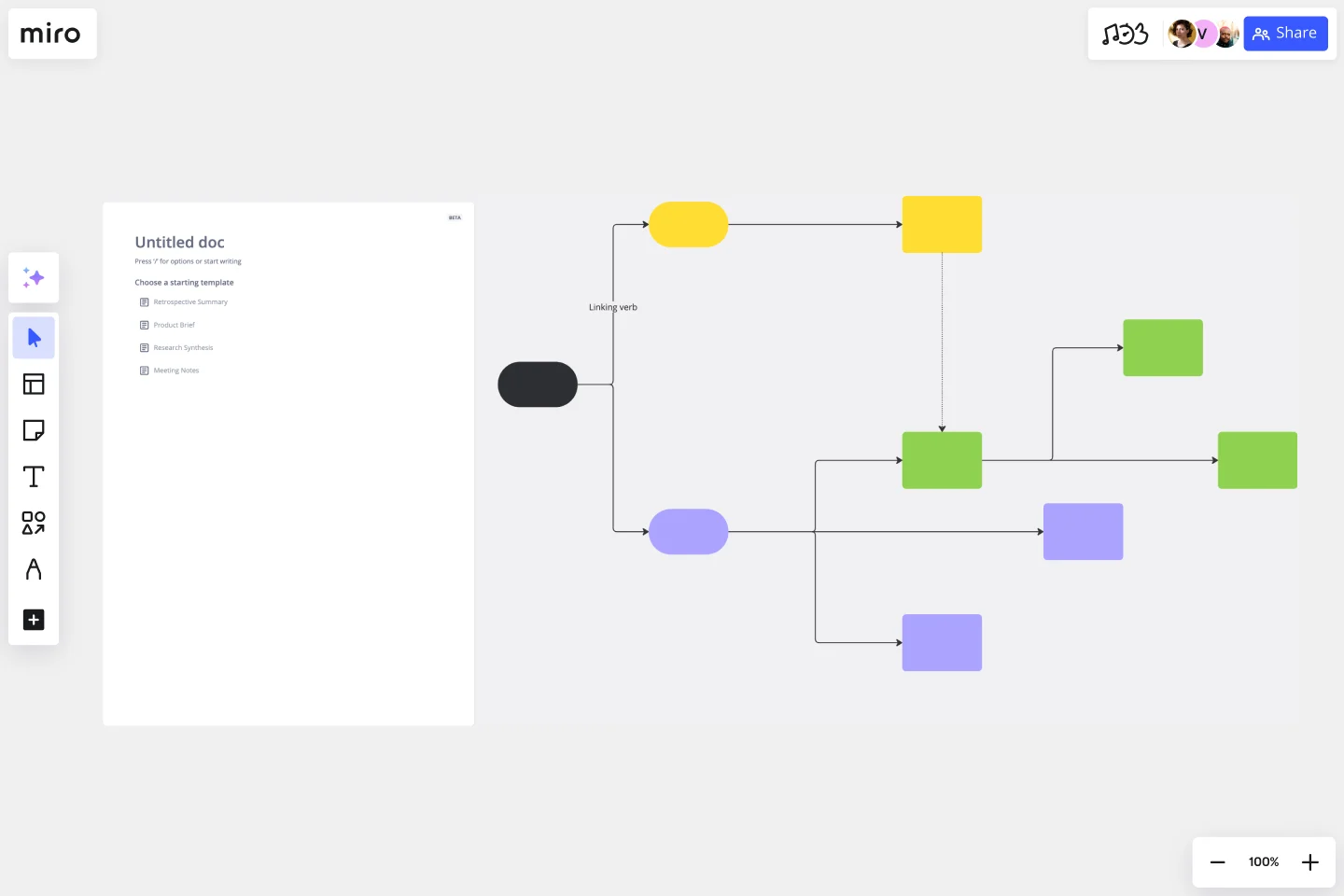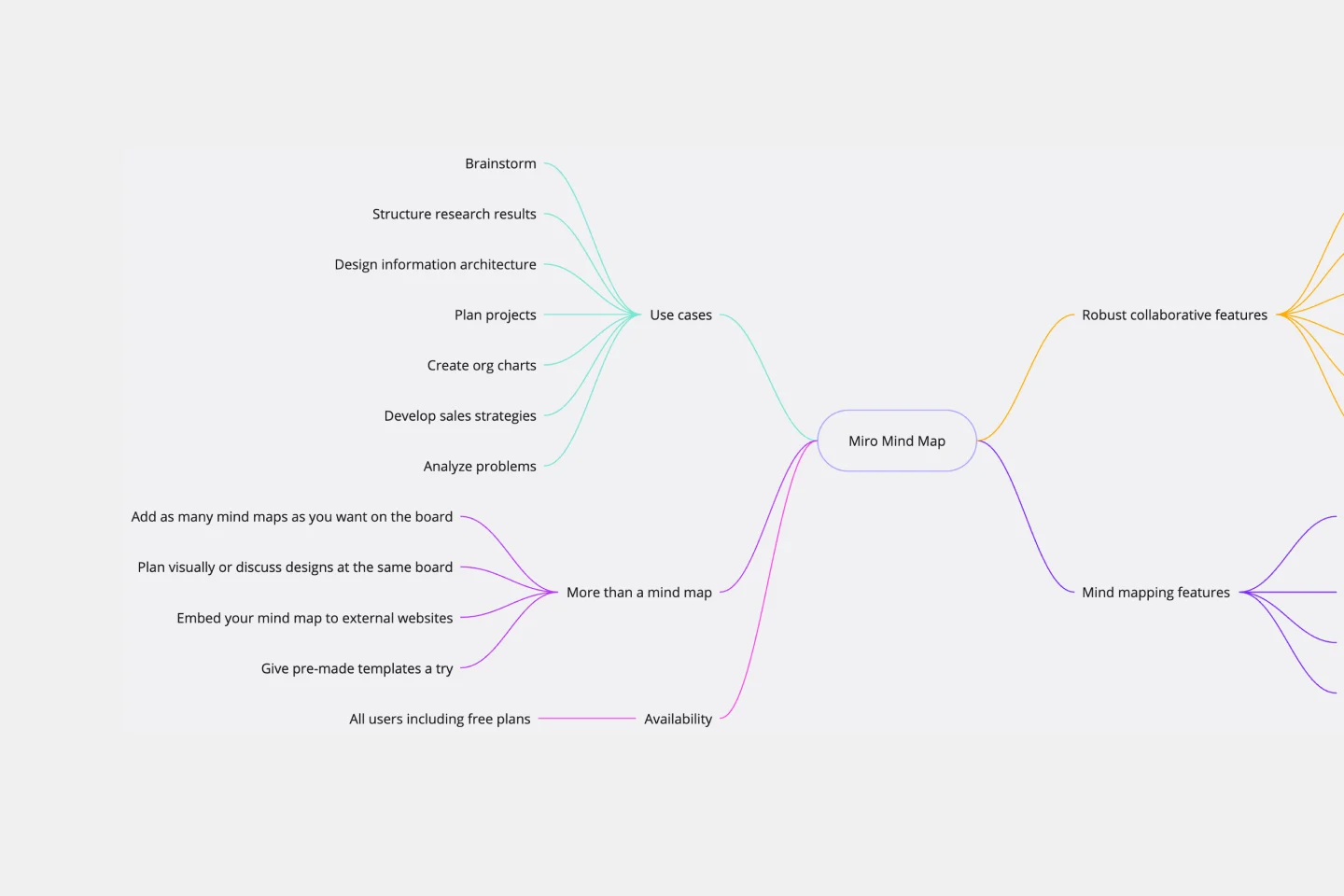About the Random Word Brainstorming template
Random word brainstorming is a simple, creative technique using random words to generate new ideas and innovative solutions to your problems. Using random word generators allows you to step beyond traditional boundaries and address challenges from a different direction. This process forces you to think outside the box by generating new ideas you may not have considered before.
What is random word brainstorming?
Random word brainstorming is a technique in which you come up with ideas by making connections between random words. It is a simple, open-ended approach that can be used for individual or group brainstorming sessions.
Random word brainstorming allows your team to solve business problems, create new inventions, improve existing ideas, or just think about problems in a new way. When you focus on a distinct problem or question, your brain immediately associates that challenge with similar obstacles you’ve faced in the past. While that can be a functional way of thinking, it isn’t always a path to creativity.
When to use an online brainstorming tool
There are times when traditional brainstorming techniques fail to generate new ideas. When you’re stuck, using a Random Word Brainstorming Template or an online brainstorming tool can jumpstart creativity and help you break away from stagnant thinking.
Brainstorming is also helpful when you need to generate ideas quickly or when you want to explore a topic from different angles. The Random Word Brainstorming Template makes it simple to capture any ideas you generate and make connections between thoughts.
What are the benefits of a random word brainstorming session?
Brainstorming sessions have several benefits, including helping you:
Generate new ideas
Think about problems in a new way
Find creative solutions to problems
Improve upon existing ideas
Random word brainstorming is a simple process and can be used in various ways. You can use it as an individual or in a group setting. The random nouns, verbs, and adjectives can help jumpstart your thinking and build on business ideas.
How to use the Random Word Brainstorming Template
The Miro Random Word Brainstorming Template provides a collaborative workspace where you can conduct your brainstorming workshops and sessions. When using the template, be sure to:
Identify your goal: What are you trying to achieve with this brainstorming session?
Start with a question: What problem are you trying to solve? Write this problem in the center circle of the template.
Select your random words: Similar to a mind-mapping exercise, users select random words and add them to the boxes to make connections.
Generate ideas: Use the random words as prompts to generate new ideas. Use the connector lines on the template to link related ideas and concepts.
When should I use the Random Word Brainstorming Template?
When you focus on a specific problem or question, your brain immediately associates that challenge with similar obstacles you’ve faced in the past. While that can be an effective way of thinking, it isn’t always a path to creativity. Random word brainstorming allows your team to solve business problems, create new inventions, improve existing ideas, or just think about problems in a new way.

Miro
Your virtual workspace for innovation
Miro is an innovation workspace designed for teams of every size, everywhere, to dream, design, and build the future together. Our mission? To empower these teams to create the next big thing, powered by AI at every step of the way. Over 90 million users around the world rely on Miro to untangle complex ideas, put customer needs first, and deliver products and services faster. All supported by best-in-class security, compliance, and scalability.
Categories
Similar templates
Concept Map Template

Concept Map Template
Use the concept map template to create new ideas, structure your thoughts, and bring your innovations to life. It allows you to explore connections between concepts and let your creativity flow in an organized format. As a result, you’re able to visualize how to bring your new ideas to reality and how various concepts relate to each other.
Brainwriting Template

Brainwriting Template
Brainstorming is such a big part of ideation. But not everyone does their best work out loud and on the spot, yelling out thoughts and building on others’ ideas. Brainwriting is a brilliant solution for them—creative thinkers who happen to be more introverted. This approach and template invites participants to reflect quietly and write out their ideas, and then pass them to someone else who will read the idea and add to it. So you’ll get creative ideas from everyone—not just the loudest few.
Mind Map Template

Mind Map Template
We see you, visual learners. You grasp concepts and understand data easier when they're presented in well-organized, memorable graphics. Mind mapping is perfect for you. This powerful brainstorming tool presents concepts or ideas as a tree — with the central subject as the trunk and your many ideas and subtopics as the branches. This template is a fast, effective way for you to start mind mapping, which can help you and your team become more creative, remember more, and solve problems more effectively.
Concept Map Template

Concept Map Template
Use the concept map template to create new ideas, structure your thoughts, and bring your innovations to life. It allows you to explore connections between concepts and let your creativity flow in an organized format. As a result, you’re able to visualize how to bring your new ideas to reality and how various concepts relate to each other.
Brainwriting Template

Brainwriting Template
Brainstorming is such a big part of ideation. But not everyone does their best work out loud and on the spot, yelling out thoughts and building on others’ ideas. Brainwriting is a brilliant solution for them—creative thinkers who happen to be more introverted. This approach and template invites participants to reflect quietly and write out their ideas, and then pass them to someone else who will read the idea and add to it. So you’ll get creative ideas from everyone—not just the loudest few.
Mind Map Template

Mind Map Template
We see you, visual learners. You grasp concepts and understand data easier when they're presented in well-organized, memorable graphics. Mind mapping is perfect for you. This powerful brainstorming tool presents concepts or ideas as a tree — with the central subject as the trunk and your many ideas and subtopics as the branches. This template is a fast, effective way for you to start mind mapping, which can help you and your team become more creative, remember more, and solve problems more effectively.